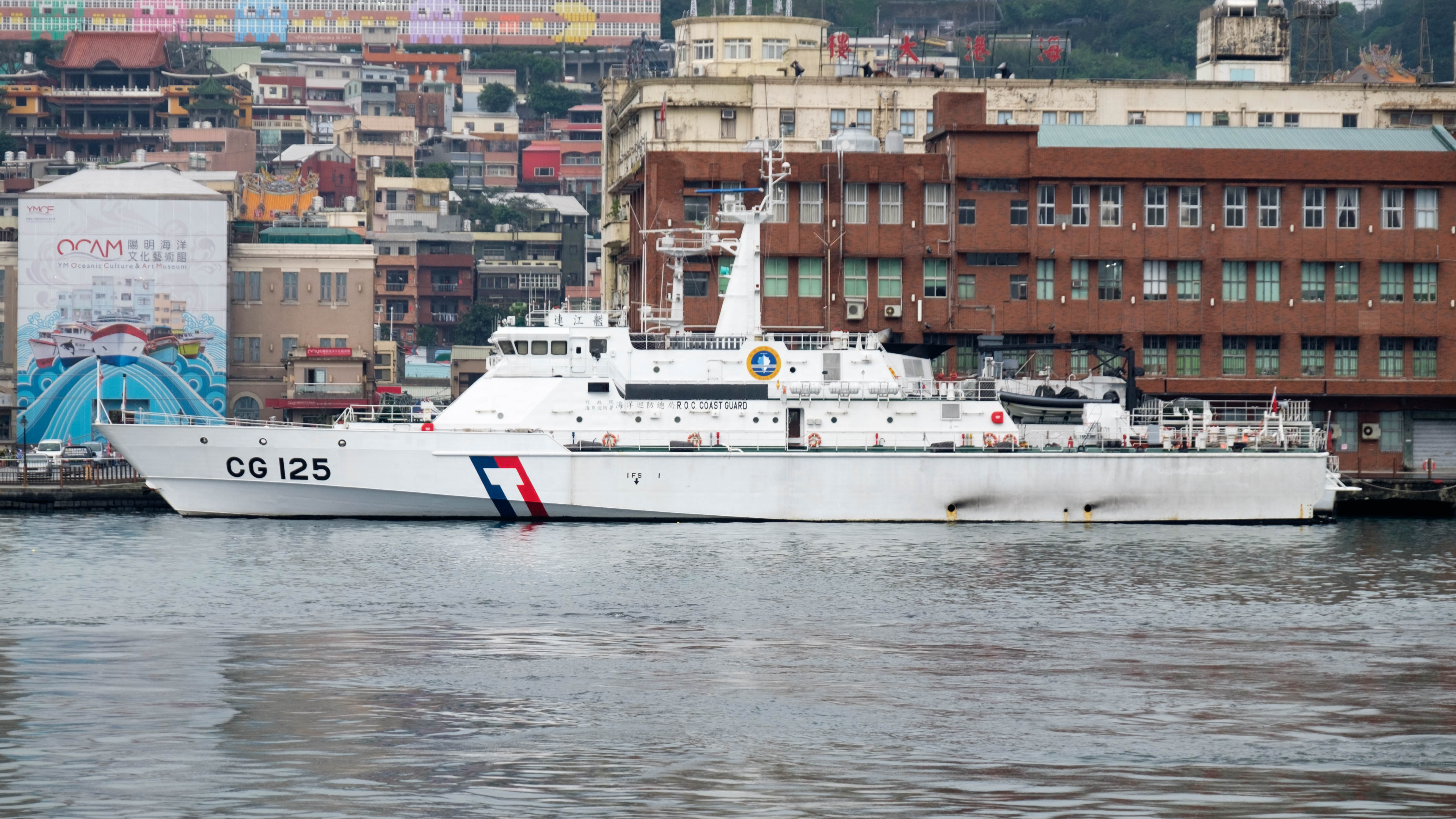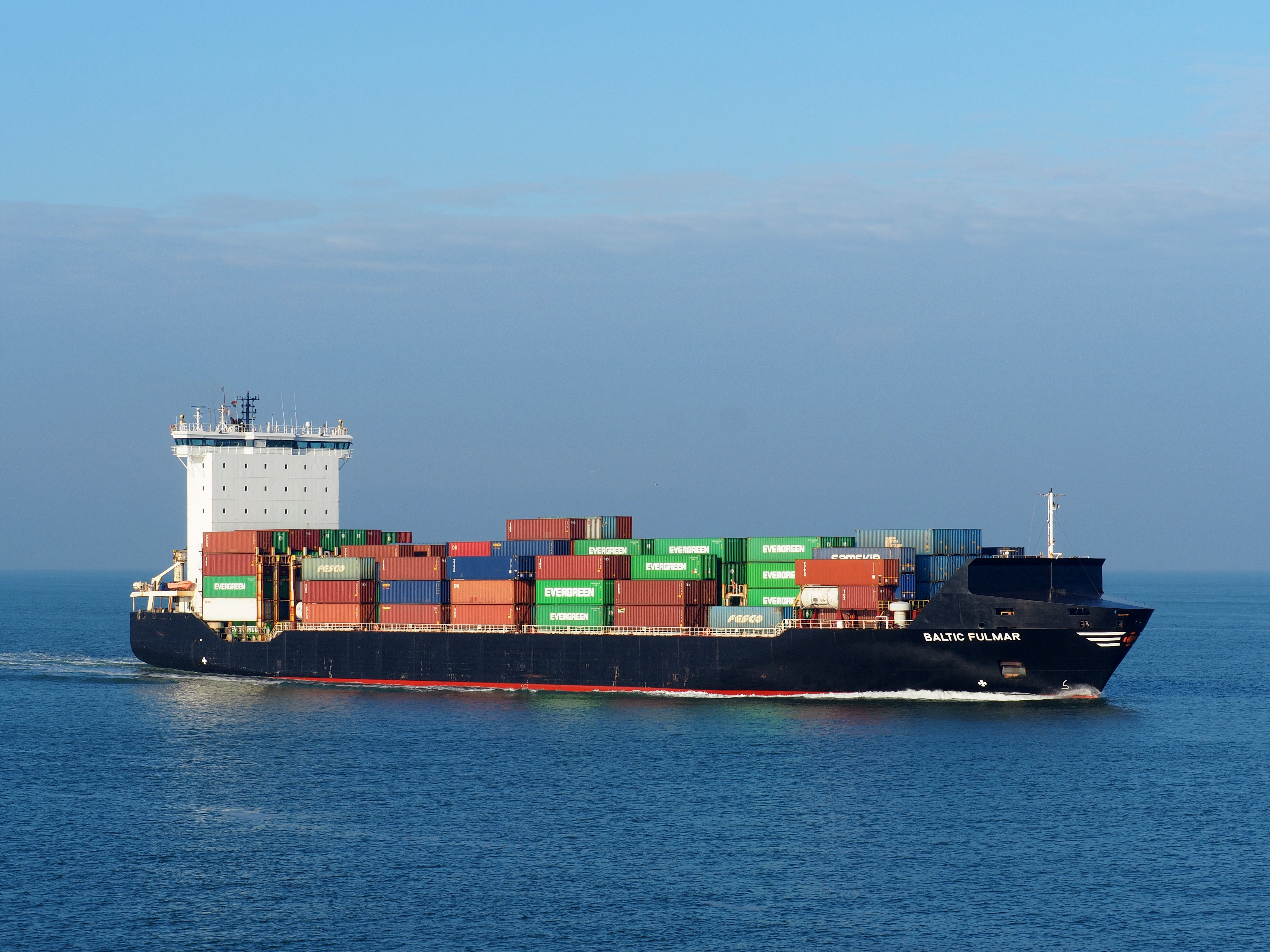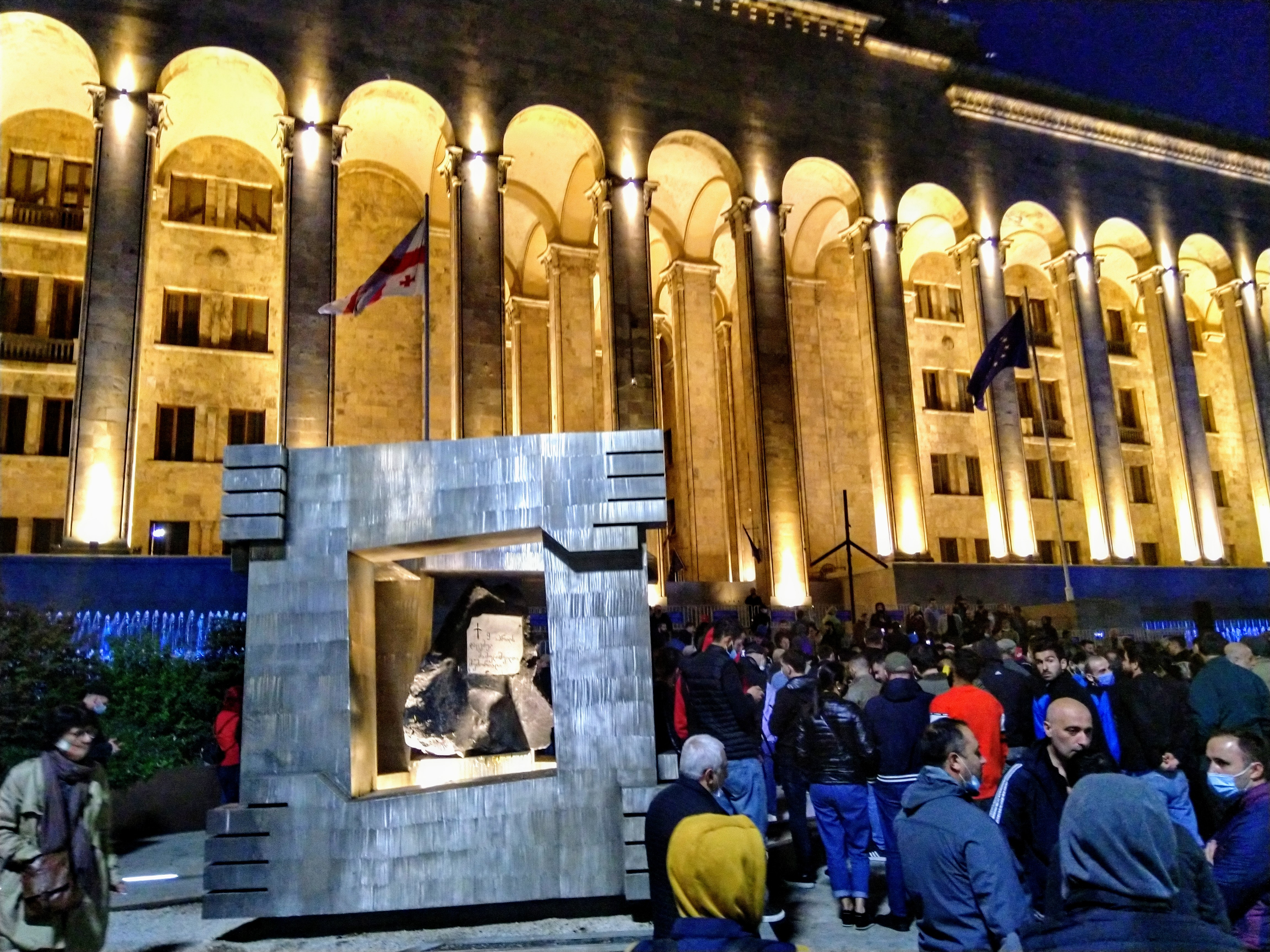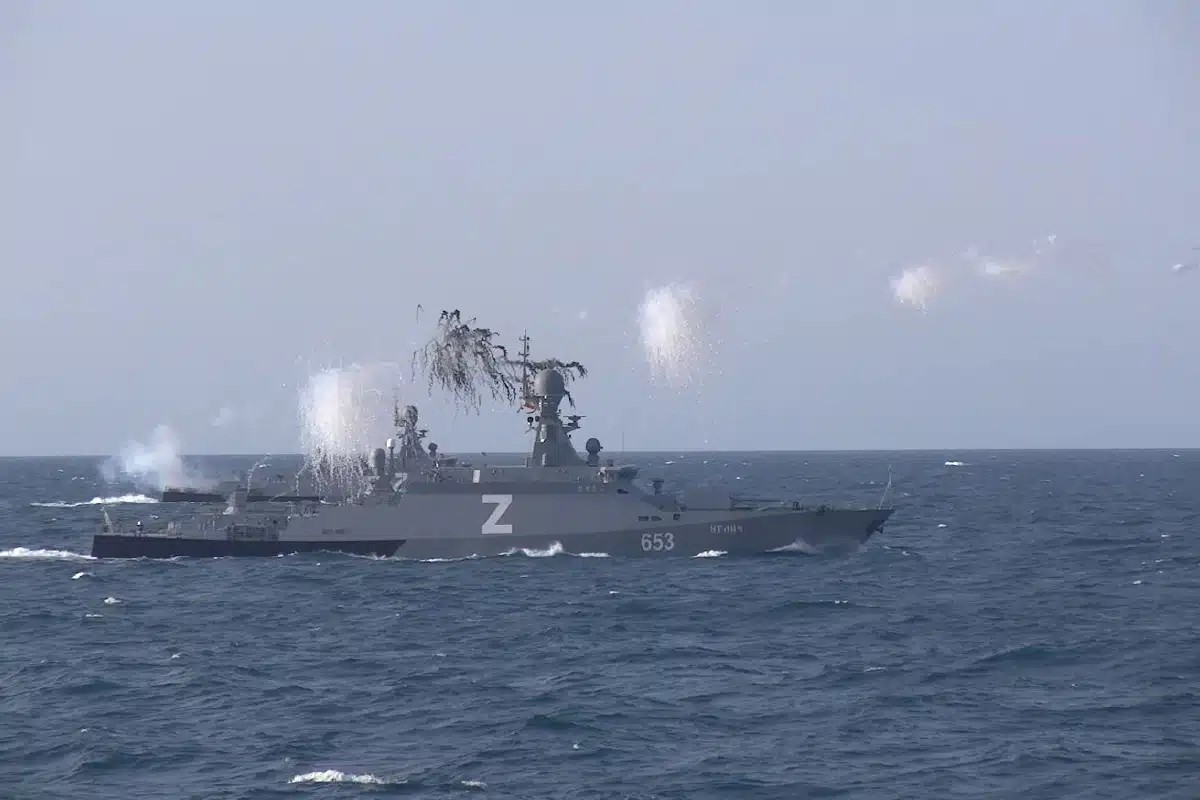Georgian President Salome Zurabishvili has called for protests in response to what she and opposition parties have claimed is Russian interference in parliamentary elections. Protests have been a semi-common occurrence in Georgia for years for a variety of causes. In this photo Georgians protest the arrest and imprisonment of those involved in violent attacks on journalists in July 2021.
“Pro-Western Georgian President Salome Zurabishvili, who has broken with the ruling Georgian Dream party, said she will not recognize the results of parliamentary elections held on October 26 and alleged that the country has been the ‘victim of a Russian special operation.’”
Election interference allegations against Russia have disrupted Moldova and Georgia’s progress towards EU integration. According to the excerpted article from independent but partially U.S.-funded FRE/RL’s Georgian Service, Georgian President Salome Zurabishvili declared that “as the only remaining independent institution,” she would not recognize the election results. According to Zurabishvili, Georgia was the “victim of a Russian special operation.” However, according to the excerpted article from the Russian daily Izvestia, the pro-Moscow Georgian Dream party,[i] won approximately 90 of the 150 seats in Georgian parliamentary elections, giving it “the opportunity to once again form a one-party government.” The Izvestia article confirms that the election was marred by tensions, intimidation, and physical violence but implies that Western observers present in Georgia, including the Organization for Security and Co-operation in Europe, “recognized the elections as legitimate.” Multiple opposition parties, which had hoped to build a pro-Western coalition government, secured only 37 percent of the vote as a bloc and have vowed to challenge the election results.
Meanwhile, Moldova also held an election for president and a referendum on EU integration in October. According to the excerpted article from RFE/RL’s Moldova Service, the election was also marred by Russian election interference, including a vote-buying scheme orchestrated by Moldovan oligarch Ilan Shor.[ii] Shor is a convicted criminal and fugitive in Moldova and is thought to be residing in Russia. Pro-EU Moldovan President Maia Sandu, who failed to secure enough votes to win reelection outright and will now have to face a pro-Moscow candidate in a runoff election, accused “foreign forces” of the outcome.[iii] In response, Kremlin spokesman Dmitry Peskov called on Sandu to “‘produce proof’ to back up her accusations.”
If substantiated, election interference in both Georgia and Moldova is a clear indication of Russia’s ability to influence areas using what has loosely been referred to as hybrid operations, non-lethal operations, or influence operations, all of which fall short of actual armed conflict, but which are very difficult to counter.
Sources:
“Georgian President Won’t Recognize Vote Results, Calls For Protests, Alleges Russian Interference,” RFE/RL’s Georgian Service (independent but partially U.S. funded news service), 27 October 2024. https://www.rferl.org/a/33175194.html?utm_source=onesignal&utm_medium=pn-msg&utm_campaign=2024-10-27-Crisis-In-Georg
Pro-Western Georgian President Salome Zurabishvili, who has broken with the ruling Georgian Dream party, said she will not recognize the results of parliamentary elections held on October 26 and alleged that the country has been the “victim of a Russian special operation.”
Zurabishvili did not present any evidence to back up her claim in a brief statement to the media in Tbilisi on October 27.
“As the only remaining independent institution in this state, I want to say that I do not recognize this election. It cannot be recognized. It would be the same as recognizing Russia’s entry here — Georgian subordination to Russia,” she said.
“I didn’t come to Georgia for [Russian domination]. Our ancestors did not live for this. We will not tolerate this. It cannot be taken away from Georgia — its European future,” she added.
She called for street protests starting on October 28 at 7 p.m. in the South Caucasus nation, which has seen mass demonstrations in recent months against the ruling Georgian Dream party, which critics accuse of being pro-Russian and of having eroded democratic norms.
She blasted what she called a “Russian special operation — one of the new forms of hybrid warfare carried out on our people, our country.”
The Georgian Dream party celebrated an apparent win in the vote, but the pro-Western opposition cried foul and election monitors said that “critical violations took place,” including voter intimidation and physical violence.
Western observers also demanded an investigation into alleged irregularities.
The vote was seen as a crucial test of the EU-candidate country’s democratic credentials, and one that Brussels had said could determine Georgia’s chances of joining the bloc.
The OSCE also decried recorded instances of vote buying, double voting, physical violence, and intimidation.
Antonio Lopez-Isturiz White, the head of the European Parliament monitoring delegation, said Georgian Dream used hostile rhetoric and “promoted Russian disinformation” and conspiracy theories ahead of the election in an attempt to “undermine and manipulate the vote.”
“During our observation, we noted cases of vote buying and double voting before and during elections, especially in rural areas,” said Romanian lawmaker Iulian Bulai, head of the delegation sent by the Parliamentary Assembly of the Council of Europe (PACE), speaking at a joint news conference held in Tbilisi by heads of election-observation missions.
“Давняя «Мечта»: готова ли Грузия к смене внешнеполитического курса после выборов (Long-standing “Dream”: Is Georgia Ready to Change Its Foreign Policy Course After the Elections),” Izvestia (long running Russian daily newspaper, sanctioned by the EU in May 2024 for spreading propaganda), 27 October 2024. https://iz.ru/1781219/elizaveta-borisenko/davniaia-mechta-gotova-li-gruziia-k-smene-vneshnepoliticheskogo-kursa-posle-vyborov
The Georgian Dream, which has ruled the country since 2012, managed to win a convincing victory. According to the Central Election Commission, it gained almost 54% of the votes in the parliamentary elections held on October 26, almost the same as in the previous elections in 2020. This gives it the opportunity to claim about 90 of the 150 seats in parliament and once again form a one-party government.
Nevertheless, the defeated united opposition actively tried to destabilize the situation. They planned to form a coalition government, but gained only half as many votes as the Georgian Dream, about 37%. Of the 18 registered political forces, in addition to the Dream, only four overcame the five percent barrier [to be represented in parliament].
OSCE observers recognized the elections as legitimate, but warned that “they will observe how the new government will adhere to the European path.” Later, the recognition of the elections as legitimate was confirmed by the Georgian Prime Minister, who called the OSCE’s conclusions quite logical.
It is not entirely clear how the relationship between the Georgian Dream and President Salome Zurabishvili, who openly supports the opposition, will develop. The head of state is exclusively in favor of the country’s European integration, and the government and parliament are in favor of balanced relations with both the West and the Russian Federation…
The question of how Georgia’s relations with Western countries will develop after the victory of the Georgian Dream also remains open. It is worth noting that the dialogue between Tbilisi and the West sharply worsened in the spring, when the authorities initiated the adoption of the law “On the transparency of foreign influence”, which provides for assigning the status of a foreign agent to an NPO or media outlet if a “foreign force” receives more than 20% of its income from abroad during a calendar year… In addition, at the instigation of the “Dream”, a law banning LGBT propaganda was adopted in Georgia. Then, at the stage of opening negotiations on joining the union, the EU announced the suspension of the country’s integration.
…If the West decides to push Georgia away, the political vector may change. So far, there is no clear political line on tearing the republic away from the West, says Vadim Mukhanov.
As for relations with Russia, they are unlikely to change significantly. After the elections, Irakli Kobakhidze said that Georgia does not plan to restore diplomatic relations with the Russian Federation due to the status of Abkhazia and South Ossetia, which Tbilisi considers its territories. It is worth noting that on the eve of the elections, the Georgian Dream promised to “apologize” to Abkhazia and South Ossetia.
“Moldovan Police Accuse Pro-Russian Oligarch Of $39M Vote-Buying Scheme.” RFE/RL’s Moldovan Service (partially U.S. State Department funded but independent regional news service), 25 October 2024.
https://www.rferl.org/a/moldova-police-accuse-shor-russia-oligarch-39m-vote-buying/33172951.html
Moldovan police have accused convicted fugitive oligarch Ilan Shor of transferring $39 million into the bank accounts of thousands of Moldovans over the past two months allegedly to buy votes for the pro-Russian camp in a referendum and the first round of presidential elections last week.
Investigators said on October 25 that they uncovered about 1 million bank transfers, which reached the personal accounts of Moldovan citizens in September and October through the Russian bank Promsvyazbank (PSB), Moldovan police chief Viorel Cernauteanu told a news conference in Chisinau.
He added that some 500 people had already been fined for “passive electoral corruption,” without clarifying what that means. No direct evidence of vote buying has been released, but under Moldovan law, it is illegal to accept large sums of money from abroad for political purposes.
Despite expectations of a landslide “yes,” the October 20 referendum on Moldova’s integration into the European Union only passed by a razor-thin margin of less than 1 percentage point…
The referendum was held simultaneously with a presidential vote, won by incumbent Sandu with some 42.5 percent of the vote — less than the 50 percent plus one vote needed to avoid a runoff.
She will face pro-Moscow ex-Prosecutor-General Alexandr Stoianoglo in a crucial runoff on November 3.
On October 21, Sandu indicated that the stronger-than-expected showing of the pro-Moscow camp in both elections was due to what she said was an “unprecedented” assault from “criminal groups,” which she said tried to buy off as many as 300,000 votes with tens of millions of euros in an attempt to “undermine the democratic process.”
Russia has denied any interference, with Kremlin spokesman Dmitry Peskov calling on Sandu to “produce proof” to back up her accusations.
The police investigation found that, in September, PSB bank, which has been under international sanctions for its support of Russia’s war in Ukraine, sent $15 million followed by a further $24 million this month. Cernauteanu said investigators had established the identities of some 138,000 Moldovan citizens in whose bank accounts the money ended up. The real number of those allegedly bribed by Shor, however, “is even higher” than the 300,000 mentioned by Sandu, because transfers made to one account were then shared between more people, he said.
Notes:
[i] Georgian Dream party, founded in 2012, won the general election the same year as part of a coalition. It proceeded to win the 2016 and 2020 general elections as an independent party as well. Upon establishment, Georgian Dream was largely considered favorable to EU integration. However, it is now considered to be pro-Moscow by Georgian opposition parties and the current Georgian President, Salome Zourabichvili, based on its support of a number of controversial laws and the dissemination of anti-Western narratives. Georgian Dream leadership dispute this vilification claiming that their current platform seeks to look to both Russia and the West equally.
[ii] Shor, who also holds Russian and Israeli citizenship, was sentenced in absentia to 15 years in prison by a Moldovan court in April 2023 over a $1 billion bank fraud. He is believed to be in Russia.
[iii] See: “Еврореферендум и выборы сделали Санду политическим трупом, считает эксперт (The Euroreferendum and elections have turned Sandu into a political corpse, says expert),” Ria Novosti (Russian daily), 23 October 2024. https://ria.ru/20241023/sandu-1979672826.html
Image Information:
Image: Georgian President Salome Zurabishvili has called for protests in response to what she and opposition parties have claimed is Russian interference in parliamentary elections. Protests have been a semi-common occurrence in Georgia for years for a variety of causes. In this photo Georgians protest the arrest and imprisonment of those involved in violent attacks on journalists in July 2021.
Source: Jelger Groeneveld, https://commons.wikimedia.org/wiki/File:Protest_in_Tbilisi_against_arrest_of_journalists_(26_Sept_2021).jpg
Attribution: CC BY-2.0








